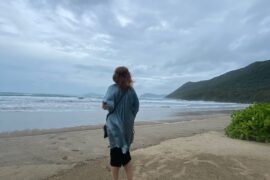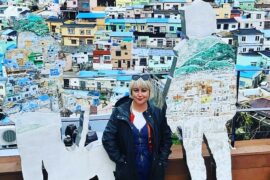Having travelled extensively throughout Vietnam, Cambodia and Laos, Vicky took the opportunity to travel to the lesser-known area of northern Vietnam with its extreme landscape and determined villagers.
Driving between Meo Vac and Yen Minh
As our car rounded another hairpin switchback, the sheer scale of the area was starting to dawn on me. Zig-zagging up sheer mountainsides, with a vertiginous drop to one side and endless twists and turns, the road that led between Meo Vac and Yen Minh in Vietnam’s Ha Giang Province managed to be at once terrifying and exhilarating. But as we climbed higher into the northern reaches of Vietnam, any sense of fear vanished from my thoughts to be replaced with wonder.
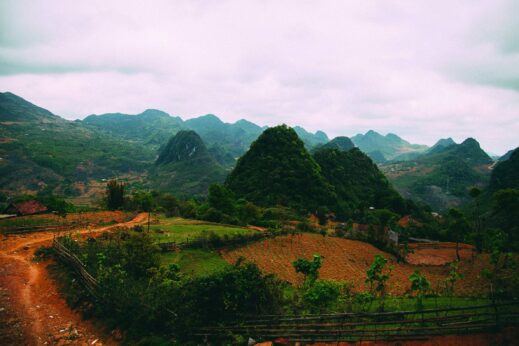
Ma Pi Leng Pass (“Heaven’s Gate”)
Hitting the road it’s hard to know how to describe a landscape so dramatic and unfamiliar. Soaring skywards, jagged, tooth-like peaks of limestone mountains tore holes in the clouds, while a thin ribbon of river snaked through the valley hundreds of metres below. This was the Ma Pi Leng Pass (or ‘Heaven’s Gate’) in the northern reaches of the highlands – the roof of Vietnam – and it felt a little like we’d entered a different world.
I had left Hanoi on my journey northwards just days before. Rolling out of the capital, I passed lush fields full of sugarcane, rice and tea, until the landscape began to bulge with limestone hills as we entered Ba Be National Park. Here, surrounded by the shrieks and hoots of the rainforest, every thicket seemed to teem with exotic life, as multi-tiered waterfalls ushered forth and spilled into green lakes.
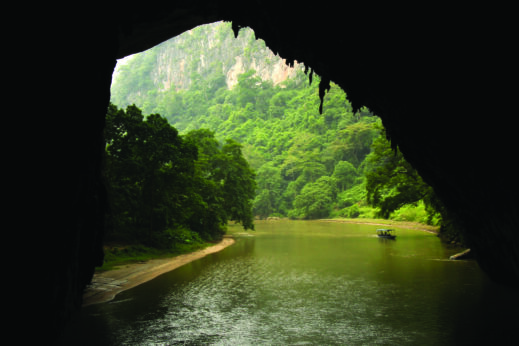
Ascending higher into the mountains, the scenery changed with every twist and turn. Trees gave way to boulders, luscious vegetation became rocky scree, and the gentle, green curves of the lower hills were replaced by steep, jagged valleys, like giant machete marks hacked into the cliffs.
It may be known as Heaven’s Gate but this rugged landscape is a harsh paradise. As the terrain becomes ever more dramatic, it also becomes more difficult to farm. The Hmong people who live here know better than anybody how difficult it is to scratch a living from the earth. “With no wood to build with, we use mud bricks or stone,” a Hmong woman told me, gesturing at the solid-looking, packed-earth walls of her house.
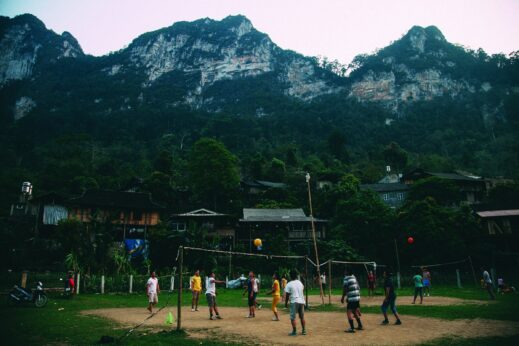
Little grows here, yet as I wandered through low-rise villages clinging to steep slopes, I glimpsed patchwork plots of soybeans, corn and bamboo. It dawned on me that life always finds a way to survive, even in the toughest of conditions.
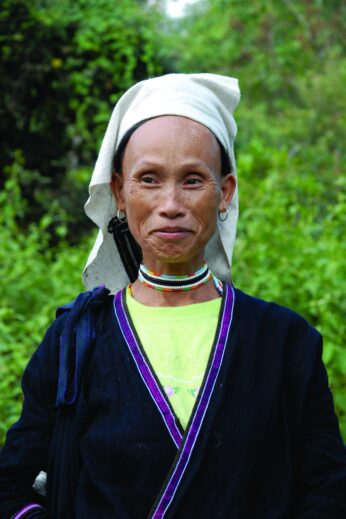
Hmong people
The people of the Hmong ethnic minority occupy the highlands of China, Laos, Thailand and Vietnam. Though they all share a rich heritage, each tribe adheres to its own customs and is identified by the dominant colour or pattern of its traditional garb – such as the Black Hmong, White Hmong, or Green Hmong. Most of those I met were members of the Flower Hmong tribe, known for their full skirts, intricately embroidered fabrics and brightly coloured headscarves. These days the Hmong tribes are among Vietnam’s poorest minorities, but it wasn’t always this way.
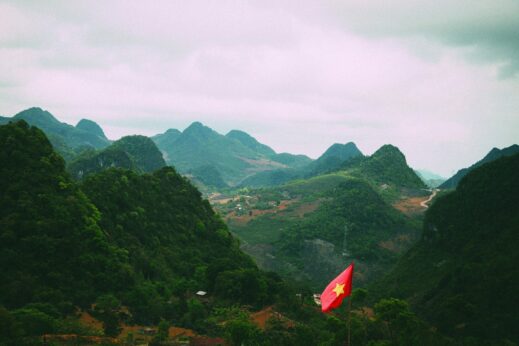
Vuong Palace
Crossing the rocky Dong Van Plateau, where rocks jutted from the ground like petrified trees, we had a glimpse of a more prosperous age at Vuong Palace – a two-storey mansion that wouldn’t look out of place in an old martial arts movie. Arranged around a central courtyard, with Chinese-style terracotta roofs and intricate wooden latticework, it was built by the French in 1914 for a local Hmong king, Vuong Chinh Duc, and stands proud against a backdrop of rocky peaks.
“They call it the ‘Opium Palace’,” My guide told me, explaining that Vuong’s kingdom stretched from Meo Vac across the Dong Van Plateau, and was once lavishly funded by the area’s booming trade in narcotics. Wandering through the palace’s 64 rooms, she pointed out beautiful carvings of fruits and poppy flowers – a legacy of the crop that made her ancestors rich and fuelled the coffers of its once-powerful king. “It is said that Vuong’s wife used to bathe in goat’s milk,” she said, gesturing to a half-moon-shaped stone tub in the backyard. That such extravagance existed here as little as a century ago was hard to believe, but here stood the proof.
Hoang Su Phi
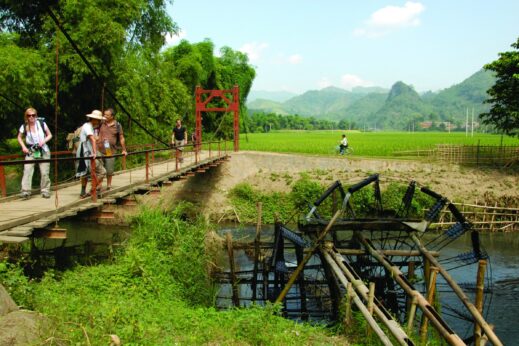
Moving on from the stark scenery of the plateau to the better-known Hoang Su Phi, the rough, craggy mountains have way once more to gentler, more cultivated slopes. Here was a landscape rippling with rice paddies – each curve traced with countless perfect lines, as though the hills had been built by stacking layer upon layer of thick felt. “At this time of year we’re still preparing the fields for planting,” my guide explained, as we picked our way between the plots. “By September this will all be bright green.”
Women’s collective in Hop Tien
Before reaching my final destination, the market town of Bac Ha, I stopped to visit the workshop of Ms Vang Thi Mai in Hop Tien. Ms Mai set up a women’s collective to offer a lifeline to victims of human trafficking – a problem that was widespread in Vietnam’s borderlands just a decade ago. The rescued women, who were disowned by their families out of shame, found a home with Ms Mai, who taught them to spin and dye hemp threads, weave beautiful fabrics, and sew them into garments and bags.
Today Ms Mai’s collective sells handmade products to tourists, hotels, embassies and export companies – and employs over 100 local women, not just those who have been ostracised. It is a chance for these local women to earn a living without abandoning their cultural heritage – and it’s a chance for victims of trafficking to start anew. As Ms Mai explains, not everyone in the village agrees with her – but little by little, these women are regaining their status in the community.
My journey through the highlands of Vietnam had taken me to a hidden realm in the heart of Vietnam’s wild north, beyond the famous rice terraces of the foothills and deep into the stark and raw grandeur of its highlands. But what impressed me most on my journey as not the dramatic scenery, but the warmth, skills and resilience of the people who call this incredible place home.
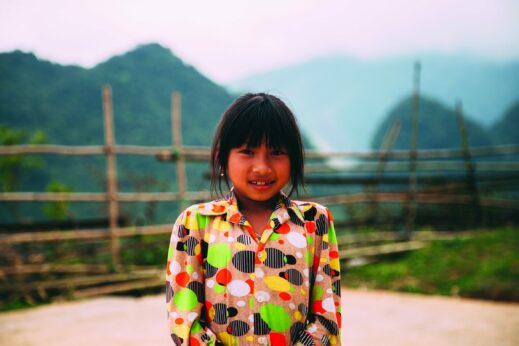
Vicky has designed our Northern Star itinerary to follow her route through the mountains, exploring the lush lower highlands as well as the more rugged north. From £1,770 for 12 nights exc. intl. flights). Call our Vietnam experts on 0117 244 3464 to find out more.

